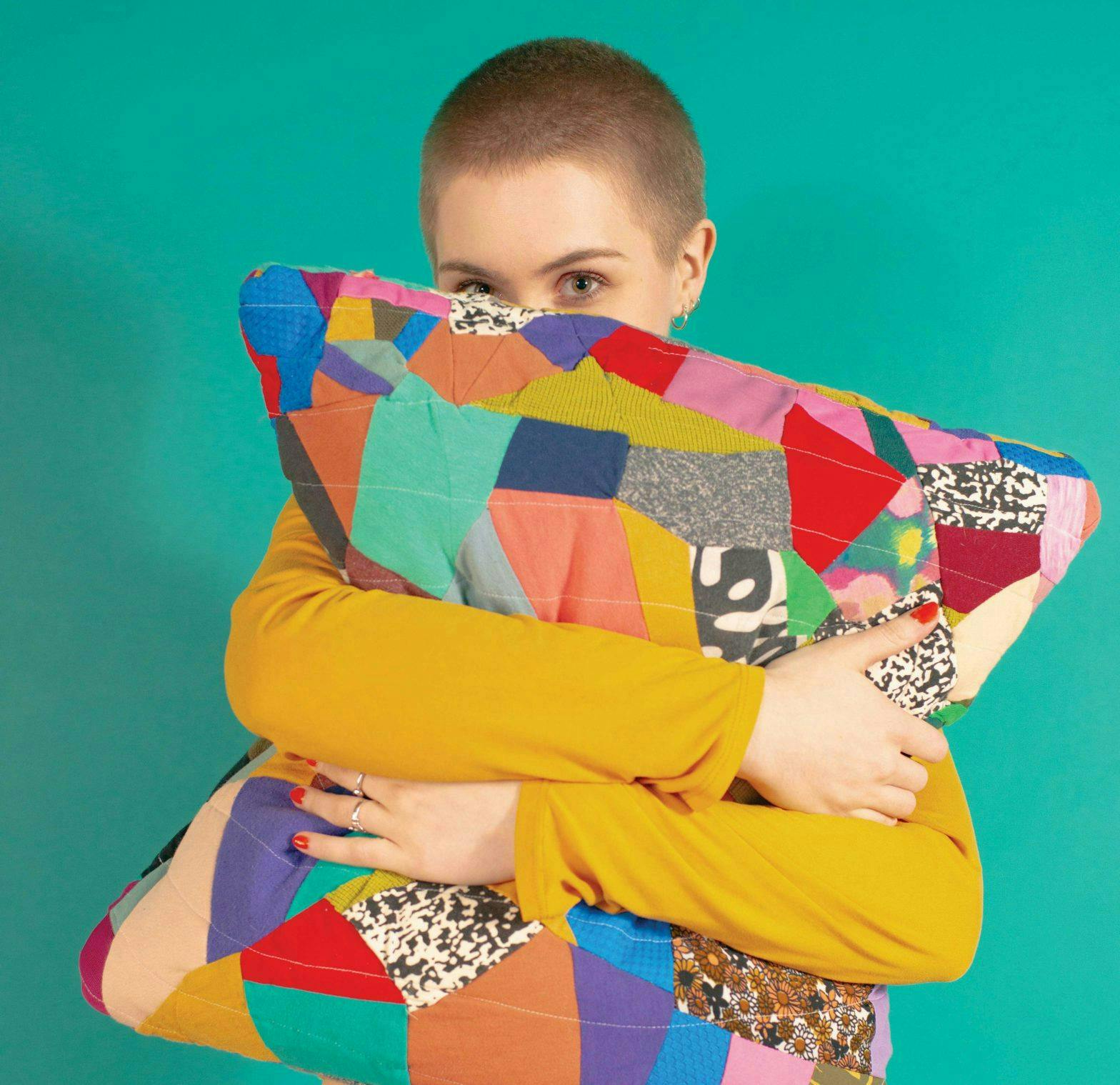
We interviewed Lily Fulop, or “@mindful_mending” on Instagram, to get some insight about the importance of mending, and what can be done.
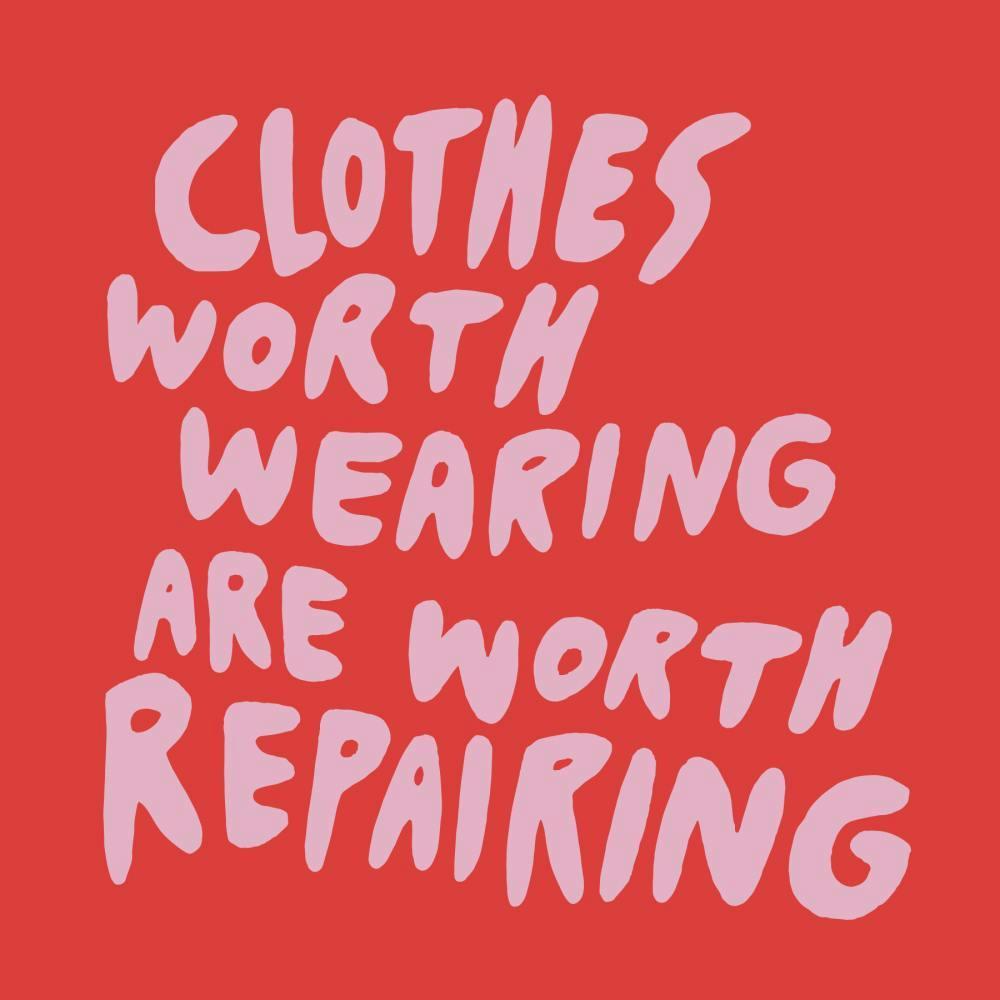
You have mentioned in other interviews that you have always been interested in making and sewing things. Do you know if that came from anywhere, a creative family, art classes… Was there anything growing up that left you wanting to create?
“I’ve always had a creative/ artistic knack, and it was definitely encouraged by my family. I was homeschooled as a kid, which left plenty of time for me to work on my own projects. I taught myself how to sew, knit, and crochet by the time I hit middle school.”
When did you realise that you wanted to make it more than a hobby? Was there a particular moment where your work (as “mindful mender”) took off?
“I knew from a young age that I wanted to work in the creative industry. My love for art and making translated most easily to design school, and a career as a designer. For the majority of my education, though, I focused mostly on graphic and communication design, while I explored fashion/craft on the side. My senior year of school, I found the opportunity to merge all of my interests when I was asked to work on a project that promoted sustainability and social change. This was actually the first time I learned how to mend, and began teaching others. I decided that I could use my platform as a designer to educate about fashion sustainability, and I started working on projects to reuse fabric waste and repair clothes, and share these skills with others. This is how my Instagram, @mindful_mending began!”
Do you take a particular approach when you mend clothes? Where do you get inspiration from?
“I have a very figure-it-out-as-I-go mentality when it comes to mending. I’m entirely self-taught, and I like to find my own ways to do things instead of worrying about what is the “right” way. I’m definitely inspired by the visible mending movement, which allows room for creativity and the celebration of flaws. I also am obsessed with traditional quilting and patchwork (like the quilts of Gee’s Bend—look them up!), and the idea of improvising with whatever you have.”
You create digital content that you share on your website and on your Instagram – It is a great way to reach out and share your messages on sustainability. How do see digital art as a promoter for mainstream mending? Has this been your main focus on raising awareness (before your book)?
“Digital art is a great way to spread messages. You can visually communicate something that is important, and explain a concept quickly—within, say, just one Instagram post. Plus, creating content that is “shareable” can create virality, where people want to repost the art and share the message with their audience. That’s one of the reasons that I like creating illustrated text posts — to me, they’re kind of like posters in a digital protest and can prompt awareness, reflection, and action.
As a designer and illustrator, I felt that it was important to use my specific skills to further the cause of sustainable fashion. If I can clearly illustrate instructions, then I should create tutorials for people to teach them how to mend. If I can work with typography, I better make sure I’m sharing an important message with my words. We all have skills and abilities to promote change, so it’s just a matter of figuring out what you can contribute!”
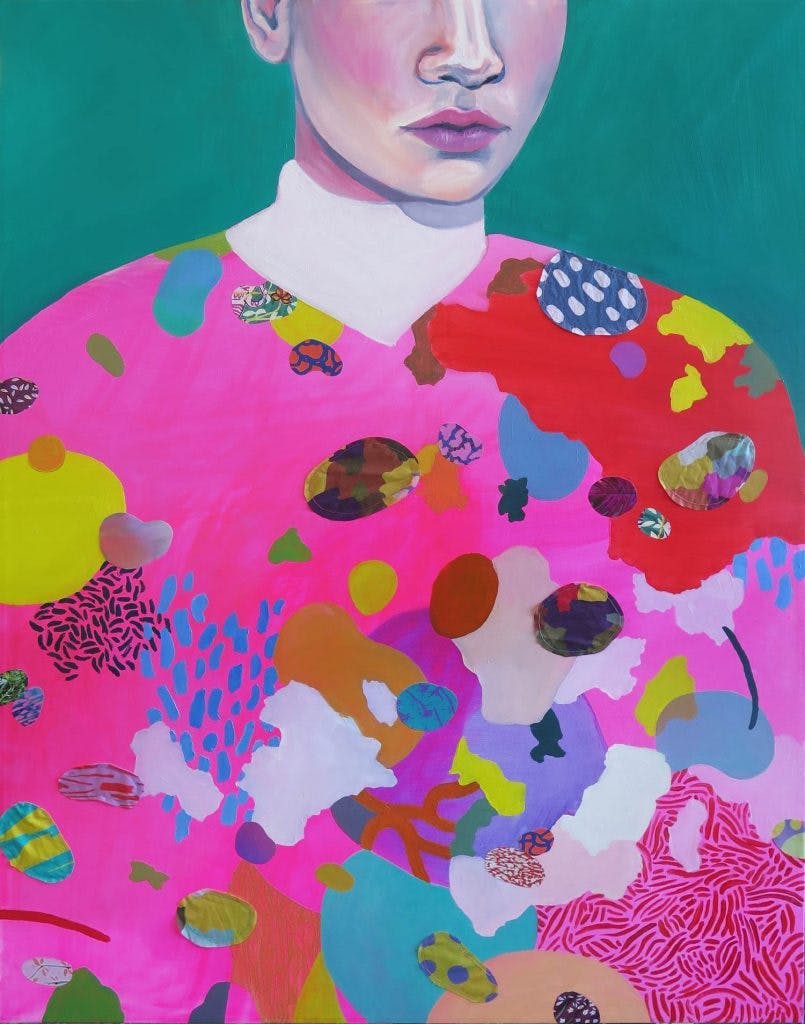
Does your digital art tie in with the mending you do? Is the digital art a source of inspiration, or does the mending inspire you for the art?
“I definitely have an aesthetic that extends to all the different types of work I do, which is colorful and tactile. For example, I like creating illustrations that have texture, patterns that are busy and layered, paintings that are mixed media, textile art from mix-matched scraps… So when I mend and upcycle, I use colorful thread and clashing prints, and let my stitches build up interesting and imperfect textures.
I recently realized a painting that I made before I really got into mending features “patches” and “stitches” which now feels serendipitous. It hangs prominently in my home and is definitely a source of inspiration.”
You have a large platform on social media that you use to communicate your messages. What type of responses have you had? Have they all been positive?
“The response to my @mindful_mending account has been overwhelmingly positive. I get messages all the time from people who have felt inspired, and sometimes people send me pictures of their own mends, which I love. I think everyone who follows me is very much aligned with the sustainability mission, so we might be a bit of an echo chamber of encouragement. There are a lot of people who currently care about sustainability, but haven’t felt empowered enough to actually try mending or implement new habits, so sometimes my posts will push them over the edge to actually take action. I’d love to continue to push my reach a bit further to people who don’t really care about sustainability yet—that’s the next challenge!”
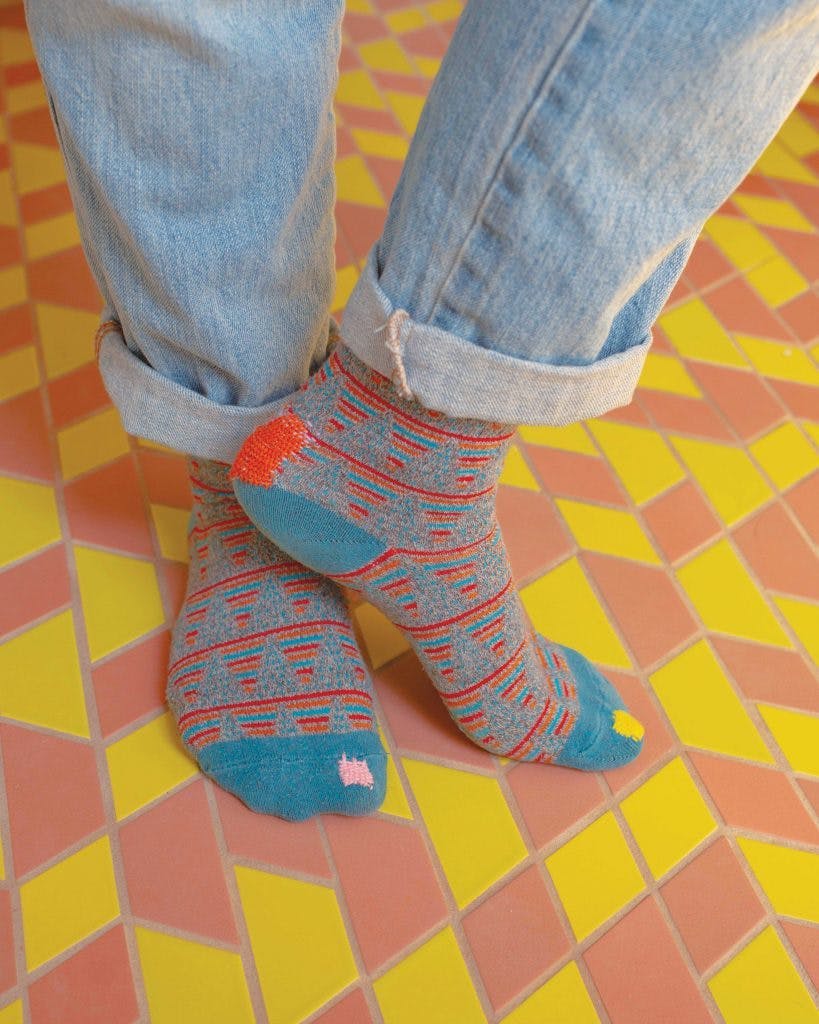
Your book “Wear, Repair, Repurpose” is launching in a couple of months. What should the reader expect to learn or discover?
“Wear, Repair, Repurpose teaches the importance of minimizing clothing waste and the joy of mending and upcycling. The tutorials I share aren’t prescriptive—they’re meant to be jumping off points for your own creativity, and able to be adapted for your own style. My goal is to teach skills while encouraging confidence, because I believe there’s not one right way to do something— it’s just important that you do it! You can expect to learn everything from simple alterations and darning, to crafts like appliqué and latch hook. All of the projects either fix your clothes, or turn your clothes into something brand new for your home!”
You mention that you “engage in meaningful and joyful sensory experiences with people”. Will you talk more about this in your book, and can you tell us more?
“In the book, I talk about how mending and hand-sewing are important because they connect us to our clothes in a material and tactile way. We’re forced to slow down, and begin to understand the amount of work and care that goes into the creation of clothes. This understanding causes us to value clothing, and the more we value clothing, the less we’ll waste it. Plus, once we realize that clothes are made by hands (not machines) we can advocate for ethical manufacturing practices and fair wages.
Customizing your clothes (through mending, embroidering, etc) can also change your mindset around style. Instead of seeking out fast fashion trends, you can express your personality through your own stitches.
When I teach people how to mend and upcycle we engage in this tactile and visual experience together, which creates meaningful change by altering people’s mindsets around clothing.”
What changes (big or small) do you hope to create with the launch of your book?
“I’d love to empower people to learn mending and craft skills, especially since these skills used to be common knowledge but have been lost because everything is now so cheap, convenient, and far-removed from us.
Beyond the specific skills and the projects in the book, the most important thing to me is conveying to people the importance of minimizing their clothing consumption and waste. I just want to cause people to pause before walking into a fast fashion store, or to attempt to fix their possessions before buying new ones. I want to plant a seed and start a conversation about sustainable fashion— no matter how big or how small.”
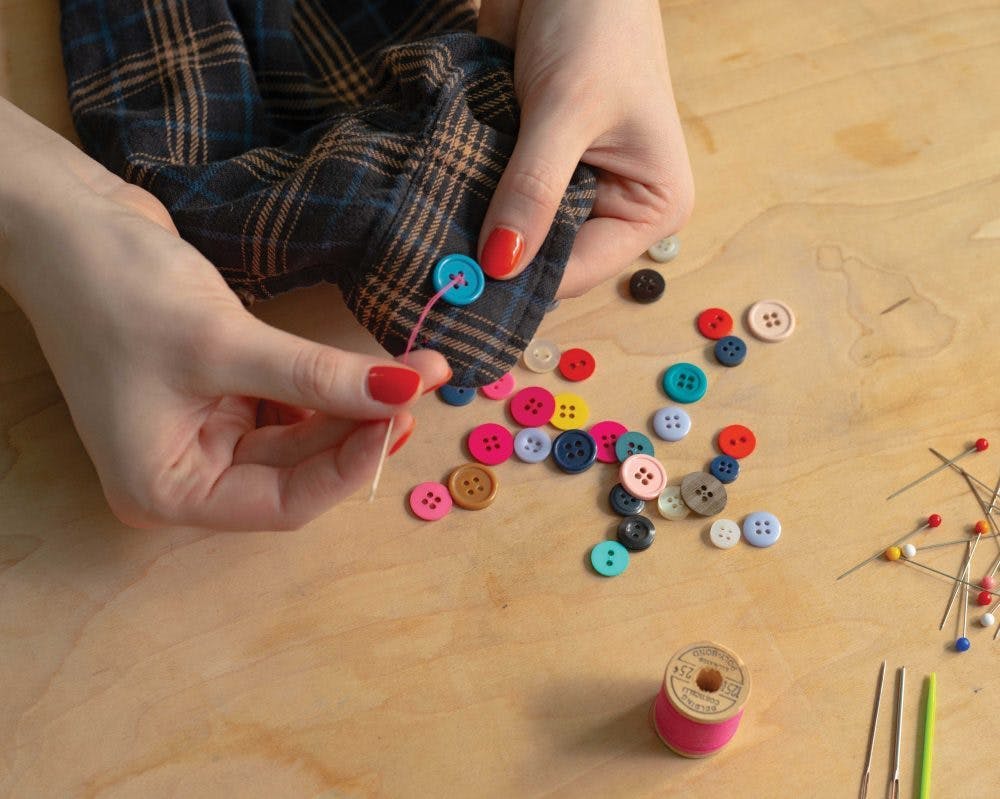
What goals do you have for after the launch of your book? Any projects you are working on?
“I’d like to host some workshops to teach people in person! Other than that, I’m excited to start working on some personal projects without having the pressure of book publication deadlines. I have a big pile of fabric scraps that are waiting to be quilted, and some ideas for clothing I’d like to make! I love making, and a longterm goal that I have is selling the things I make, but I’m not quite there yet.”
You mention elsewhere that you believe education is key. How could we educate children to mend and to repurpose? Many of our habits are constructed through our families, but do you think we could counteract unsustainable family habits with education?
“I think parents just need to create a new norm for their kids! When kids are brought up in sustainable households, it’ll be second-nature for them— so, it seems more important to me to educate parents, and it’ll spread to their kids! Parents, buy your kids secondhand clothes, encourage them to make toys out of things that are already around the house or in the yard, compost with them, explain to them why you’re mending your clothes.
I don’t think the impetus for sustainability should be placed on our children— It’s our responsibility to make changes now, because there’s no time to waste.”
What changes have you already witnessed in the fashion industry (if any)? And what can we do to keep changing it in the right direction?
“Something that is both troubling and promising is the fact that fast fashion companies have begun to have eco-collections which are supposed to be sustainable! This is troubling, because it can easily just be greenwashing to distract from other unsustainable/unethical practices, but it’s promising because sustainability is catching on to the point that it’s “trendy” now. Awareness and demand are both growing, so hopefully the fashion industry will respond in real, meaningful, and lasting ways.
I’ve seen smaller-scale designers making a point of using deadstock material or creating accessories with off-cuts, which is awesome. I’ve also noticed the vintage and secondhand market growing in popularity, which will hopefully decrease the amount of new things being produced. New brands are popping up all the time with an emphasis on transparency of their production process and materials (following Everlane’s example, for instance) which is really important because it puts pressure on other brands to reveal their practices (and change them if they’re unsustainable/unethical)
The movement Fashion Revolution’s rallying cry is “Who made my clothes?” — we need to use our voices as consumers to demand more transparency from brands, and support the brands who are doing things right. We can vote with our dollars and refuse to buy fast fashion. We can rally and protest. We can change our own consumption habits, and make our clothes last longer.”
Would you share with us some of your tips on mending?
“Make sure you have the basics readily available— thread, a needle, extra buttons, iron-on patches if you aren’t sewing-inclined. Anything more major can be taken to a tailor if needed.
“A stitch in time saves nine” — literally! Mend something as soon as you see it, even if it’s just a tiny hole or a small fray. It’ll keep it from growing into a bigger problem later.
Make a hand-stitching sampler to teach yourself the basic techniques, and to have something to refer to when the time comes. Some really handy stitches in mending are the running stitch, backstitch, and whip stitch. When hemming, the catch stitch works really well! Hemming is a skill everyone should learn.
Embrace visible mending— you don’t need to hide the imperfections in your clothes, you can highlight them! This removes some of the pressure of doing mends perfectly and allows you to celebrate mistakes. An example of this is embroidering fun motifs over stains.
Learn about different kinds of fabrics and how they behave! Understanding what needs to be hand-washed, or what is most likely to fray can help you take preventative measures to make your clothes last longer.
Start a collection of extra buttons— If your coat comes with an extra one on the tag, keep it! You never know when it’ll come in handy (if not on your coat, on a different piece of clothing!). I like to collect vintage buttons and mix-match them into garments.
When darning socks, use a jar (or another round container) to hold the sock taut while you work (if you don’t have a darning egg/mushroom)
Put scraps of fabric behind holes to reinforce the weak area of fabric that extends beyond them, so the hole can’t grow. Look up sashiko stitching as a technique for this!”
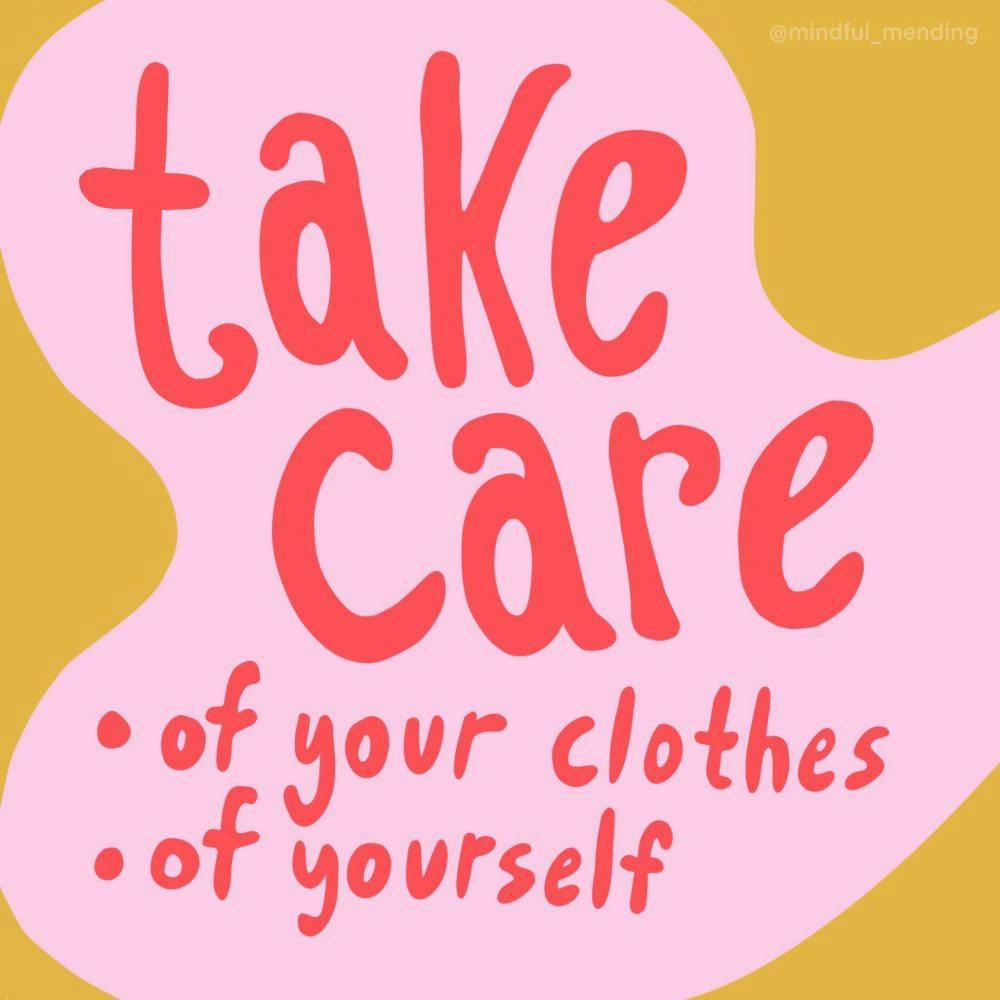
Her bookWear, Repair, Repurpose is launching on the 31st of March 2020, and it holds more tips and tricks about mending! As daunting as it may seem, Lily showed us that mending clothes can be fun and doesn’t have to be perfect to be worth the while. So go grab the jeans that have a rip that top that has a hole, and try something new. Extending the lives of your clothes is a great step towards sustainable living, helping you reduce your waste.
Artwork by Lily Fulop
Photos by J Houston